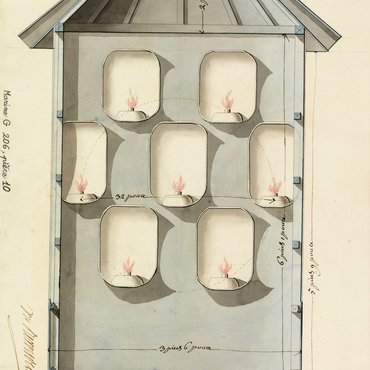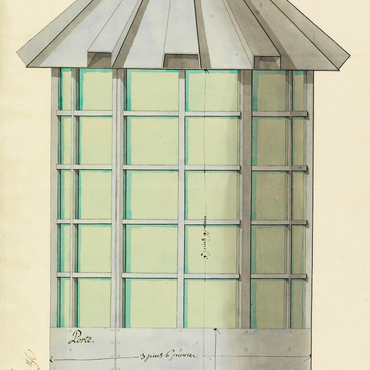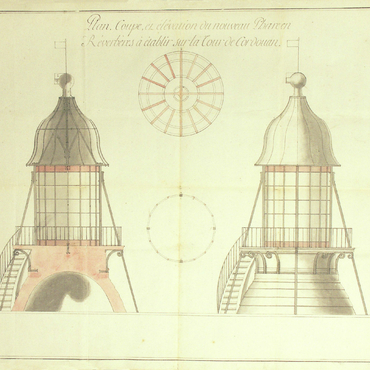
- Home
- The Age of Enlightement
- The Enlightement in the lighthouses
- The device installed in 1782
On 23 June 1781, Tourtille-Sangrain entered into the first lease of Cordouan for 1,225 livres and 10 sols, supplied included. Annual oil expenses were estimated at 3,829 livres. The device and the installation work were estimated at 21,000 livres. The reflector consisted of 80 lamps fitted with 20-cm reflectors (8 pouces) arranged on five arches held by a central shaft. Each lamp had a flat wick that drew oil from a small reservoir located behind the reflector. A crank was used to raise and lower the lights to the level of the keeper entrusted with looking after them. Under the direction of the engineer Joseph Teulère (1750–1824), the octagonal lantern was enlarged to make it easier for the keeper to manoeuvre. It was also clad in large plates of Bohemian glass. A drum with two wooden doors on one side of the lantern provided access to the walkway. Tourtille also supplied the oils, which were a mixture of rapeseed oil, olive oil, spermaceti (whale oil) and turnip oil. These blends allowed the oil to be used in winter, even under conditions of extreme cold. The device was first lit on 12 November 1782. The impressive ensemble gave the impression that it would be a powerful and abundant source of light. However, six weeks after the light was installed, sailors were already complaining about its feeble illumination. It could not be seen farther than two leagues away, whereas the coal fire could be seen at six or seven leagues.In July 1783, Tourtille returned to Cordouan to make some major changes. He changed the shape of the lantern's aeration vents, altered the entry door by trial and error, moved the arches and, above all, installed thirty reflectors that were larger – 22 pouces.

